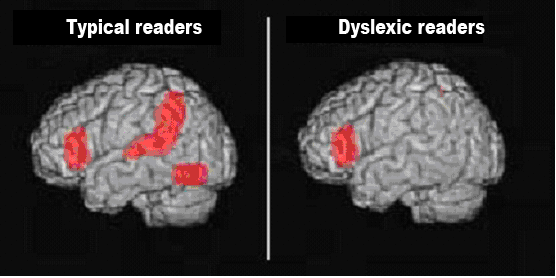Sounds Sort
Improves phonological awareness by sorting words by their sound.
For example Bat, "Ah" (/æ/): and Lady, "Ay" (/eɪ/): .
Children who struggle to read find this activity difficult.
Phonics is the tip of the iceberg when teaching children to read. In order to learn to read they also need good auditory skills.
More than just a phonics program, Fluency builder is based on neuroscientific research about why children with dyslexia struggle. It exercises all the parts of the brain needed for fluent reading, and targets skills like phoneme manipulation and phonological awareness which been been proven to be key to fluent reading.
Phonological awareness is one of the best predictors of reading success. But often schools fail to teach this crucial reading skill. Most struggling readers have a problem hearing sounds in words, which is called the phonological deficit. For example they can’t hear that goat contains 3 sounds – g oa t. It’s just one blob of sound to them.
Reading is often taught via phonics. I.e. your child is taught that oa makes the long o sound. And that they should blend g + oa + t to make goat. But if your child can’t hear that goat contains three sounds, then teaching them phonics won't teach them to read.
Fluency Builder contains 50 lessons. Each lesson covers a new sound, plus exercises to improve the phonological deficit, plus an easy or hard reading passage that also teaches new vocabulary.
Learn how to change words and identify phonemes through pattern matching. This helps Improve reading and spelling.
Fluency Builder improves the Phonological Deficit.
Reading is done in the brain. But which parts? MRI scans show that dyslexic people use different parts of the brain to read than non-dyslexic people do.
Numerous scientific studies have proven brain plasticity – that the brain can be changed by practising and repeating tasks.
Scientific studies into children with dyslexia have proven that repeating activities that activate the part of the brain that non-dyslexics use when reading, changes their brain so that they read more like a non-dyslexic person does.
MRI scans have found differences in the brain between people with and without dyslexia.

Image courtesy of Society for Neuroscience and Guinevere Eden
Fluency Builder contains activities which have been proven to activate the parts of the brain needed to read fluently. These activities are: phonological awareness, rapid automatic naming, phoneme manipulation, segmenting, auditory discrimination and morpheme mapping.